March, 1953
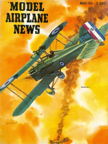
Royal Aircraft FactorySE-5-a
Model Airplane News Cover Art for March, 1953
by Jo Kotula
Click to Enlarge
The S.E.5 (Scout Experimental 5) was designed by Henry P. Folland, J. Kenworthy and Major F.W. Goodden of the Royal Aircraft Factory, in Farnborough. The first of three prototypes flew in 1916. The first two prototypes were lost in crashes (the first killing Major Goodden) due to a weakness in their wing design. The third prototype corrected the faults in the first two - the S.E.5 became known in service as an exceptionally strong aircraft which could be dived at very high speed.
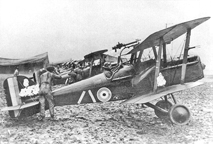

Photos of the Royal Aircraft FactorySE-5-a
Click to Enlarge
Like the other significant Royal Aircraft Factory aircraft of the war (B.E.2, F.E.2 and R.E.8) the S.E.5 was inherently stable, making it an excellent gunnery platform, but it was also quite manoeverable. It was one of the fastest aircraft of the war, at 138 mph equal at least in speed to the SPAD S.XIII, and faster than any standard German type of the period. The S.E.5 was not as effective in a dog fight as the Sopwith Camel, as it was less agile, but it was easier and safer to fly, particularly for novice pilots.
The S.E.5 had only one synchronised .303-in Vickers machine gun to the Camel's two. However it did have a wing-mounted Lewis gun that enabled the pilot to fire at an enemy aircraft from below, as well as forward. This was much appreciated by the pilots of the first S.E.5 squadrons, as the synchronising gear for the Vickers was unreliable at first. The Vickers gun was mounted on the left side of the fuselage with the breech inside the cockpit. The cockpit was set amidships, making it difficult to see over the long front fuselage, but otherwise visibility was good. Perhaps its greatest advantage over the Camel was its superior performance at altitude - so that (unlike most Allied fighters) it was not outclassed by the Fokker D.VII when that fighter arrived at the front.
Here is a video of the Royal Aircraft FactorySE-5-a in action:
Jo Kotula revisited the S.E. 5 in the "Box Art" for the Aurora kit.
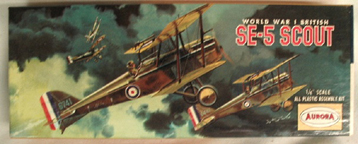
Aurora Plastic Model of the R.A.F S.E. 5
Artwork by Jo Kotula
Click to Enlarge
Click Here for more information about the Royal Aircraft FactorySE-5-a.
An early World War One airplane employed basically the same construction techniques for the model or the actual airplane. Thus, they continued to be in demand. Although the last SE-5 disappeared into a museum in about 1918, Cleveland was selling kits for the plane well into the 1950s as shown below. The SE-5 was offered in the Master Plan version or in the simplified "E-Z" series as shown. The "stick" construction was admirably suited to these planes and modelers could be well-satisfied that their achievements looked and flew like the real thing.

Cleveland Model of the Royal Aircraft FactorySE-5-a
Click to Enlarge
You can buy the plans and patterns that will enable you to make this model right now. Click Here to go to the exact location on the Cleveland Website to get them.
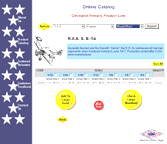
Royal Aircraft FactorySE-5-a at the Cleveland Site
Click to Enlarge
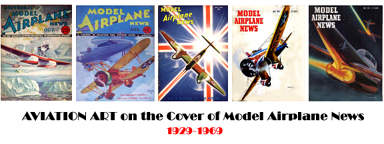
Click to go back and select another cover.
Counter for the Entire Site (not just this page..)
Home | About Lindy | Last Week's Reviews | Upcoming Events | 1940s Collecibles
The Guide - Establishments - Travel - Accessories
Music | Links | Photo Gallery | Extras | Contact